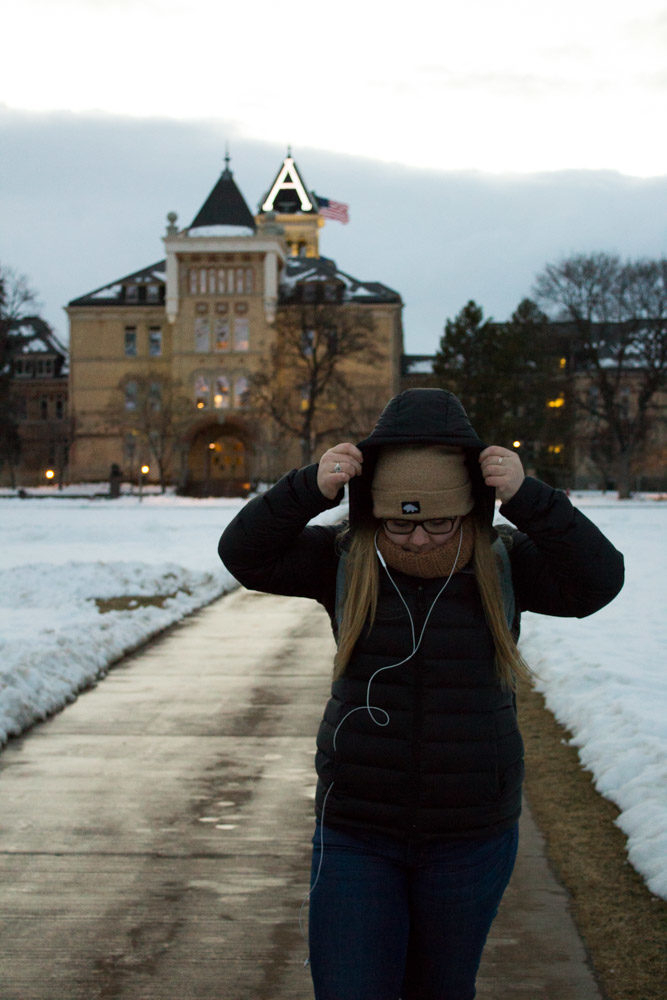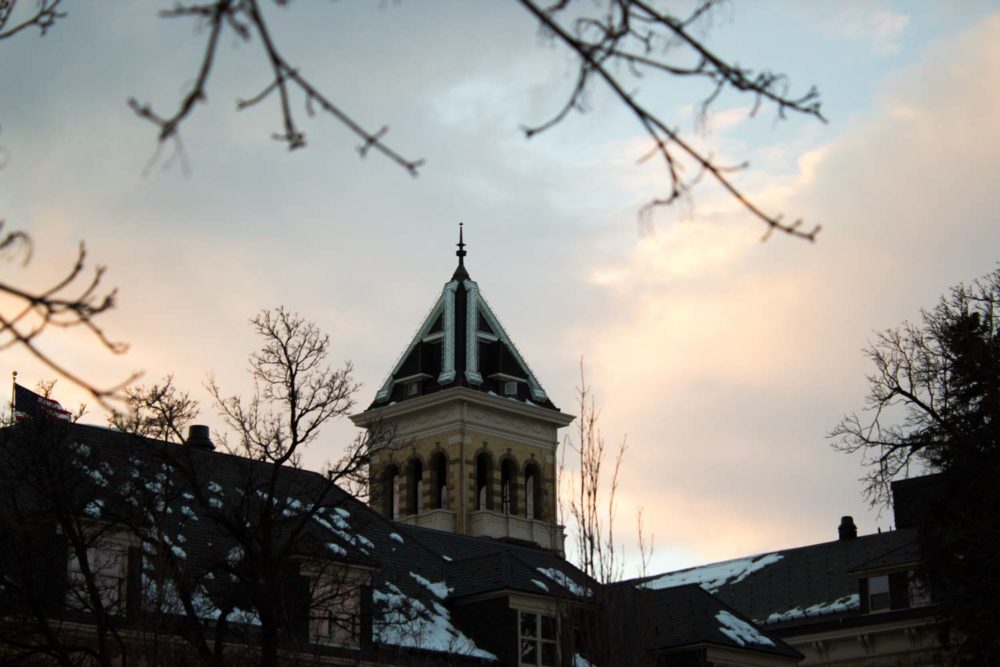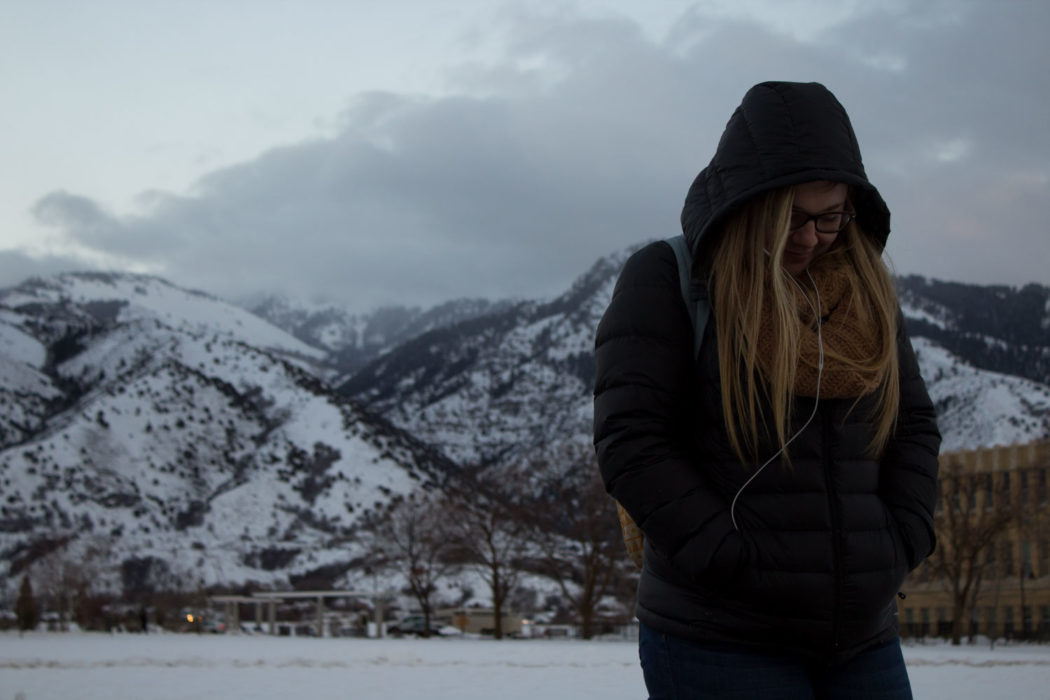Living a SAD life: What is Seasonal Affective Disorder and how do students cope?
Imagine one glance out of a window — one look at the dreary, cloudy, dark skies outside — being enough to keep people inside for days, or even weeks at a time.
For those living with Seasonal Affective Disorder, like many students at Utah State, this is an annual reality. SAD is defined as a type of depression that is affected by the changing of the seasons. This disorder usually begins and ends around the same time every fall and winter.
Symptoms include depression, loss of interest in activities that used to bring enjoyment, low energy, trouble sleeping, feelings of hopelessness, worthlessness and sluggishness, according to the Mayo Clinic. SAD messes with the ability to function normally on a daily basis during the winter months.
Chelsea Beck, a USU student, used to enjoy winter as a child and loved playing in the snow.
“I’m not exaggerating one bit, but now I dread everything about winter,” Beck said. “Since I started actually paying attention, I’ve definitely noticed a shift in my outlook when the spring and summer months come on. I have more of a drive to work hard and get things done.”
Beck said it’s a cycle she repeats every year.
“I just shut down which I know isn’t healthy, but some days I just can’t function,” Beck said.
Sophia Harper is a music therapy major at USU who lives with SAD and says that it’s more than just being bummed out during the winter.
“It’s honestly so exhausting. Constantly fighting your own mind to get things done just adds three levels of exhaustion to the already tiring life of a college student,” she said. “The fact that it gets dark so soon isn’t helpful because your brain automatically thinks it’s sleep time, even if it’s four in the afternoon.”
 Bryn Wynder
Bryn Wynder Besides professional therapy and appropriate medication, there are ways to cope with the sadness that one might not always think about.
Beck said it is important to recognize that SAD is a very real condition.
“I would like for people to understand that during fall and winter more than any other time of the year, some of us just need to sort of shut in to be able to process the anxiety we are experiencing,” Beck said.
Hannah Earling also struggles with anxiety and depression, as well as SAD. She has found ways to remain optimistic, even when it isn’t always easy.
“I want to help others get out of it, even though there isn’t a lot I can do,” Earling said. “There needs to be a way to get rid of the stigma and inform others about mental health.”
Earling said being with people is a good distraction and is a good way to take her mind off of things.
“I care for people personally, and I care for everyone,” Earling said. “I want to be there for people and be their friend. It’s important just to be there for people.”
One night in the middle of winter, Earling decided she needed to get out of her room, the place where she felt the most depressed.
“I walked across the street to the park in the middle of the night. It actually helped but it wasn’t a cure,” she said. “If you feel depressed, take time to get out of the place that makes you feel that way, go find something to do or call up a friend. It can help you focus on other things.”
Earling encourages those who struggle with SAD, as well as depression and anxiety to verbalize their emotions, and not to keep them in.
 Bryn Wynder
Bryn Wynder ”You may feel like the world is against you and like everyone hates you. Anxiety is the paper cut, and depression is the punch to the gut,” Earling said. “It isn’t good to pretend that life is just great all the time.”
One Utah State student, who asked to not be identified, has found medication and counseling to be helpful. Lightbox therapy mimics natural light during the winter months when less sunlight is readily available. According to the Mayo Clinic, lightbox therapy affects brain chemicals that have to do with mood and sleep.
Harper said that SAD can completely override everything else in life. Luckily she has found found therapy through the CAPS office to be the most useful for her.
“I have a great therapist who helps me learn coping mechanisms and has taught me the difference between taking care of myself and coddling my mental illness,” Harper said. “It helps to have someone who knows things that are going on.”
Harper also encourages reaching out to others who struggle with mental illness and SAD.
“Mental illness isn’t the pain Olympics,” Harper said. “Being depressed and having anxiety does not define you. It’s important for others to acknowledge that we have mental illnesses. We just want you to acknowledge and let us feel what we feel without judgement.”
— kortni.marie.wells@aggiemail.usu.edu
@kortniwells

